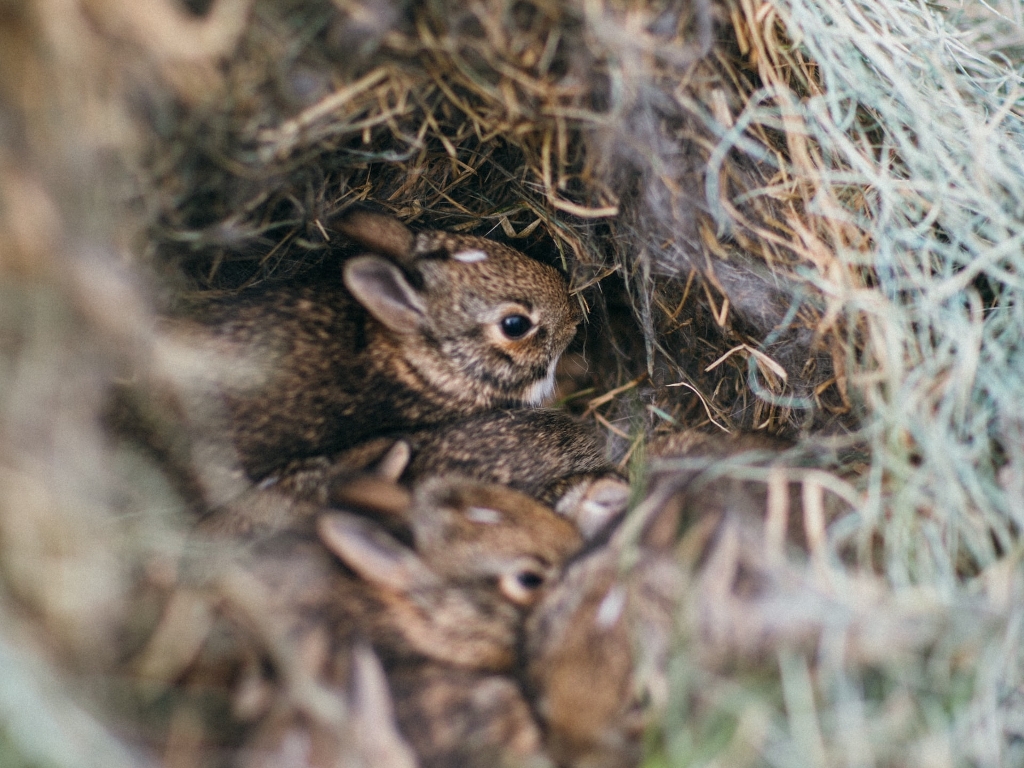
Caring for a Wild Baby Bunny: A Comprehensive Guide
Introduction
Wild baby bunnies, also known as kits, are vulnerable creatures that require specialized care if they are to survive. While it may be tempting to take a wild baby bunny home, it is important to remember that these animals are best left in their natural habitat. However, there are situations where it may be necessary to intervene, such as if the bunny has been orphaned or injured. In these cases, it is crucial to provide the proper care to ensure the bunny’s well-being.
Determining if Intervention is Necessary
Before taking any action, it is essential to determine if the baby bunny actually needs assistance. Observe the bunny from a distance for several hours to see if its mother returns. If the mother does not return within 24 hours, or if the bunny appears injured or sick, it may require intervention.
Handling the Bunny
If you must handle the baby bunny, do so gently and with care. Wear gloves to avoid transferring any scents that could deter the mother from returning. Support the bunny’s body with one hand and its head with the other. Avoid holding the bunny upside down or by its ears.
Providing Warmth
Baby bunnies are unable to regulate their own body temperature, so it is important to provide them with a warm environment. Place the bunny in a small box lined with soft materials, such as a towel or blanket. Cover the box with a heating pad set to low or use a warm water bottle wrapped in a towel. Monitor the bunny’s temperature closely to ensure it does not overheat.
Feeding the Bunny
Baby bunnies require a specialized diet of kitten milk replacer. Do not feed the bunny cow’s milk or other types of milk, as these can cause digestive problems. Kitten milk replacer can be purchased at most pet stores.
To feed the bunny, use a syringe or eyedropper. Hold the bunny upright and gently insert the syringe or eyedropper into its mouth. Feed the bunny small amounts of milk replacer every few hours. The amount of milk needed will vary depending on the bunny’s age and size.
Stimulating Elimination
Baby bunnies cannot urinate or defecate on their own. To stimulate elimination, gently rub the bunny’s genital area with a warm, damp cloth. This will encourage the bunny to urinate and defecate.
Housing the Bunny
Once the bunny is stable, it should be housed in a quiet, draft-free area. The enclosure should be large enough for the bunny to move around comfortably, but not so large that it becomes difficult to keep clean. Line the enclosure with soft materials, such as towels or blankets.
Releasing the Bunny
The ultimate goal of caring for a wild baby bunny is to release it back into its natural habitat. Once the bunny is old enough and has developed the necessary survival skills, it should be released in an area where it is likely to find food and shelter.
When to Seek Professional Help
If you are unsure about how to care for a wild baby bunny, or if the bunny’s condition worsens, it is important to seek professional help from a veterinarian or wildlife rehabilitator.
Additional Tips
- Keep the bunny’s environment clean and free of debris.
- Handle the bunny as little as possible to avoid stressing it.
- Monitor the bunny’s weight and growth regularly.
- Provide the bunny with plenty of fresh water.
- Do not give the bunny any medications or supplements without consulting a veterinarian.
Conclusion
Caring for a wild baby bunny is a challenging but rewarding experience. By following these guidelines, you can provide the bunny with the necessary care to ensure its survival and eventual release back into its natural habitat. Remember, it is always best to leave wild animals in their natural environment, but in cases where intervention is necessary, it is important to provide the proper care to give the bunny the best chance of survival.
